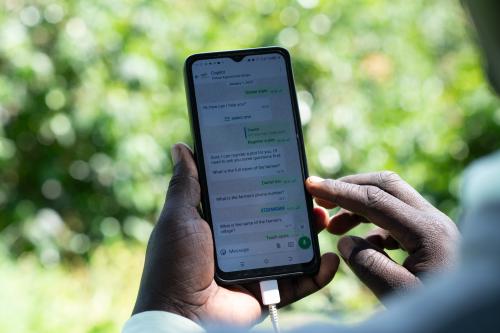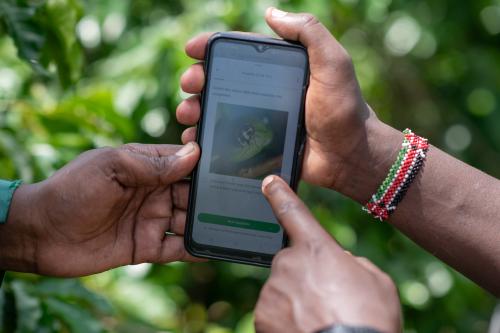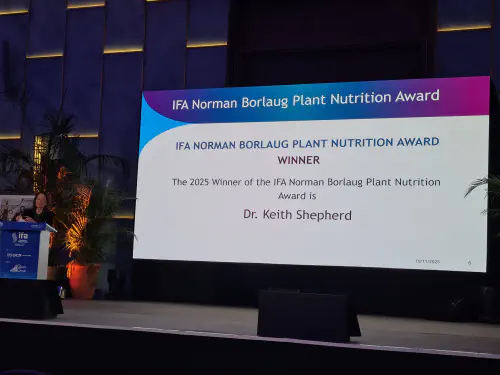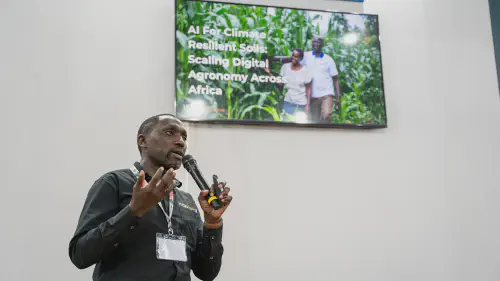Meet Abi Wairimu, one of the brilliant minds behind Virtual Agronomist. Her journey began with a passion for computer science and a belief that technology could transform African agriculture and has led her to playing an instrumental part in bringing Virtual Agronomist to life. Here she shares how combining AI, science and farmer insights has created a tool that’s as much about people as it is about tech.
What first drew you to this work?
When I first started studying computer science, I was fascinated by the potential of AI systems and how they could be applied to solve real-world problems. So when I had the chance to help build Virtual Agronomist, I jumped at it. It brings together machine learning, expert systems and generative AI - but what excites me most is that it’s already delivering tangible value to farmers across Africa. This isn’t just a lab experiment - it’s AI at work in the real world.
What problem were we trying to solve?
Millions of smallholder farmers still lack access to the tailored, timely advice they need to get the best from their land. Traditional extension services are expensive to run and struggle to reach everyone. Virtual Agronomist is our response: a science-backed, tailored, farmer-first tool that delivers expert agronomic guidance via channels farmers already use - like WhatsApp.

A farmer using Virtual Agronomist to register a plot
What makes the Virtual Agronomist different?
I’d say it’s how we’ve built it: in partnership with agronomists and farmers themselves, together with lots of excellent research and data. It pulls in hyperlocal data - from soil nutrients to information on pests - and uses decision science and models to generate real-time recommendations tailored to each farmer’s field. Then it delivers that guidance in simple, practical language. I love that it’s not only powerful, it’s a personal tool that farmers can access from their pocket.
As much as we’ve jumped on exciting tech developments to build Virtual Agronomist, I’d actually say that it’s not a tech-first tool; it’s a farmer-first tool, powered by science and designed to serve real needs in real time.

A farmer using Virtual Agronomist to diagnose a pest issue
What was it like building the tool?
When ChatGPT was first released, our first step was to prototype a simple version of Virtual Agronomist that could pull and interpret soil data from the iSDAsoil map. That part was relatively straightforward.
Once that foundation was in place, the real challenge began - getting the AI to reliably interact with farmers and collect the right information to trigger agronomic recommendations. That was the fun part.
One of the earliest challenges we faced in the field was keeping the AI grounded when it encountered complex or unfamiliar scenarios. We had to find the right balance between making the most of the AI’s intelligence and flexibility and ensuring its responses remained consistent, practical and scientifically sound.
Another key challenge was making the system adaptable enough to meet the diverse needs and usage patterns of the very different farmers using it - from different regions, with different crops, literacy levels and tech access. We wanted to create something smart, but also deeply usable in real-world conditions. That’s what keeps the work exciting.
What impact are we seeing so far?
Virtual Agronomist reached over 250,000 farmers in under 12 months and is still growing rapidly just 18 months since launch! We’re seeing very exciting early signs of improved yields (up to 50% for some crops in some areas!) and smarter input use.
Another thing I’m particularly pleased to see is how the tool is helping in opening new income streams for lead farmers who support their communities. This is particularly important to me as a Kenyan – Kenya currently has exceptionally high unemployment rates, particularly for young people.
What’s next for the Virtual Agronomist?
We’re working on even more personalised support - like weather alerts that help farmers decide when to plant and are currently translating the tool into more languages – like Kinyarwanda - so even more farmers can access it!
Overall, the goal is to keep improving how we listen to farmers and make the guidance smarter, faster and even more localised.
Any closing thoughts?
My time as an undergraduate Computer Science student instilled in me the belief that technology could address many of the socio-economic challenges facing the continent. Seeing the development of Virtual Agronomist has been a tangible expression of that belief - bringing it to life in the most practical, farmer-focused way.



